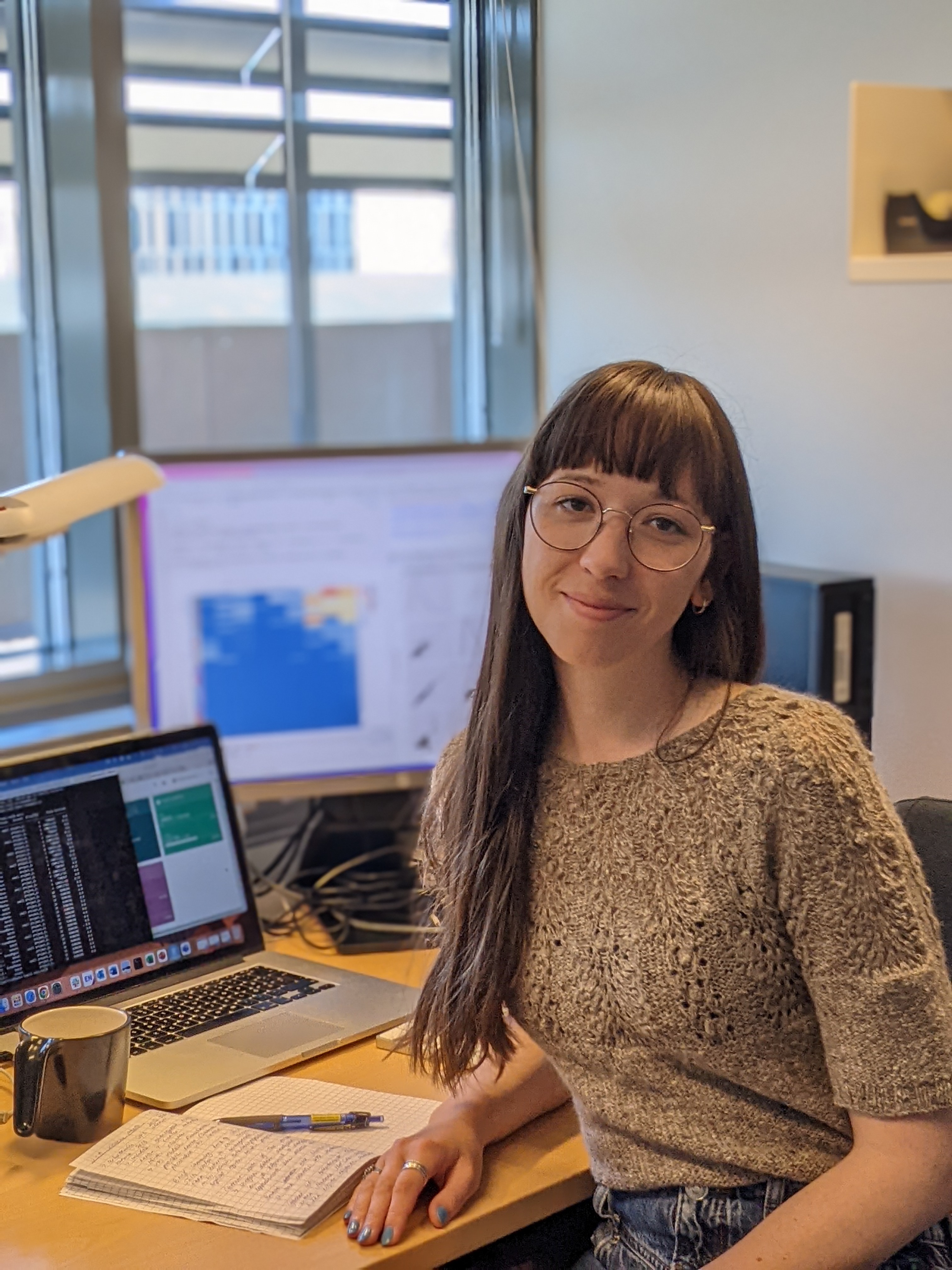Research: The living environment, skin microbiome and allergies

The human microbiome is the set of microbes living on the skin and mucous membranes, and the genes they contain. There is a constant exchange of information and cooperation between the microbiome and the human immunological defence system. An imbalanced microbiome can predispose a person to the onset of various chronic diseases, such as autoimmune diseases or allergies.
PhD student Matilda Riskumäki became interested in microbes already when she started studying biology at the University of Oulu about ten years ago. Researching the relationship between the microbiome, the human immune system and allergies has led Riskumäki from Oulu to Sweden, first to Uppsala University and the Karolinska Institute, and then to the Faculty of Medicine of the University of Helsinki.
"I think it's great to think that we humans are not alone in this world. There are many different things in our environment, but even our own skin has its own unique living community of microbes. Microbes are often thought of as pathogens, but in reality, most of the microbes on human skin are beneficial to us. A bacterium or a virus does not automatically mean problems. However, human microbial communities seem to have some kind of effect on the outbreak of allergies," Riskumäki explains the topic of her dissertation and her preliminary research results.
The Instrumentarium Science Foundation awarded Riskumäki a grant of 28,000 euros for her doctoral research "Crosstalk between the living environment, skin microbiome and allergic sensitization" in February 2023.
Metagenomic sequencing of skin samples
The research material used by Riskumäki was mainly collected ten years ago both in North Karelia and on the other side of the border in Russian Karelia. A large number of samples taken from the skin creates a good opportunity to study the differences between regions using modern technology. Due to the war of aggression started by Russia, the collection of similar research material is unlikely today.
"The research method I use is DNA sequencing, where the genes of microbes found on the skin are studied. For a long time, sequencing only analysed certain parts of the entire genome of the research subjects. In my research, the method is metagenomic sequencing, in which case the object of research comprises all microbial species and their genes in a single sample, i.e. the metagenome of the sample. This research method clearly improves microbial species identification and increases our knowledge about the functions of microbial species on the skin," Riskumäki says.
The same materials have already been studied earlier using somewhat older research techniques. Now, in addition to bacteria and yeasts on the skin, we can also study viruses and how different microbes might behave on the skin. At the same time, we can investigate whether the activity of microbes can affect our immune system.
There are more allergies on the Finnish side
Research material was collected about 10 years ago from both Finland and Russia, so that comparisons between regions that are geographically quite similar, but different in terms of culture, way of life and means of livelihood, are possible.
"On the Russian side, farming is the livelihood of a much larger part of the population than in Finland. Our urbanization is much further along. This can also be seen in skin samples. There are fewer allergies on the Russian side than in Finland. This may be due to the reduction of biodiversity in cities, which exposes us Finns to allergies more," Riskumäki thinks.
With the help of the grant, it’s possible to focus on what’s essential – the research
The grant Riskumäki received enables her to do her research for a whole year. The larger grant is a great relief, because now Riskumäki can focus on the actual research instead of making various grant applications. The grant decision is also a confirmation that her research is important and relevant.
"I use the grant in its entirety for living, i.e. mainly for food and housing. I hope and believe that the grant will also make it easier to get further funding. I'm about halfway through my research, so there are still several years of research ahead," Riskumäki thinks.
Text: Kai Tarkka / Viestintäpalvelu Taika Oy
Picture: Matild Riskumäki
